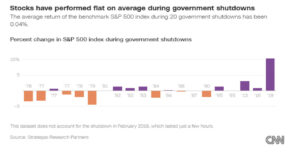
CAISSA’s November Perspectives
This month, CAISSA’s Investment Committee conducted our semi-annual due diligence review on U.S. Large-Cap equity. We engaged in productive conversations with out portfolio managers and got updates on the team as well as portfolio performance and positioning. The committee diligently reviewed performance attribution, portfolio metrics, and holdings relative to benchmarks and investment manager peer groups. The concentration of the S&P was also deliberated. Upon review, we remain pleased with our current investment managers and our allocation weightings.
Additionally, the Investment Committee deliberated recent developments from the Federal Reserve and the impact of rising yields. We carefully analyzed the consequences of a possible government shutdown on client portfolios as well as the developments between Israel and Hamas and the potential for further geopolitical escalation. Read below for the CAISSA Perspective!
S&P Concentration
The S&P 500 Index has significant concentration to the top holdings due to its market-capitalization approach. Just five stocks, Meta (Facebook), Amazon, Apple, Microsoft, and Alphabet (Google), account for 23% of the S&P 500 Index. This is back to the highest level of concentration the S&P 500 has ever seen.
CAISSA View: This creates significant risks, and we feel it is paramount to remain disciplined and diversified within U.S. Large-Cap.
The Fed
In the most recent FOMC meeting, Fed officials indicated a ‘restrictive’ policy staying in place until inflation eases. All officials also agreed that rates should stay high for “some time” to keep bringing down inflation with “several” policymakers seeking to shift focus of decisions and communications toward how long to keep rates high, rather than how high to raise rates.
CAISSA View: Whether the rates move in the short-term or not, portfolios are built with the long-term in mind. We view this a short-term volatility and that the longer term projection will have rates lower than today as we look out 2+ years.
Government Shutdowns
Congress avoided a government shutdown on October 1st, 2023, by passing a stopgap spending bill (known as a continuing resolution) that funds federal agencies at last year’s levels for 45 days. The federal government has experienced 14 shutdowns since 1980 with the most recent in 2013 that lasted 34 days as well as 2018 from December into January, 2019.
CAISSA View: If Congress fails to pass a full-year spending bill or a stopgap “continuing resolution” (CR) to keep the government open, there could be another shutdown threat in November. However, stocks historically have performed relatively flat during shutdowns, on average. See below:
Israel & Hamas Conflict
In early October, Hamas, a Palestinian militant group designated as a terrorist organization by the U.S. government, launched an attack on Israel, killing hundreds of civilians and taking dozens more hostage. In response to the attack, Israel launch a counteroffensive on Hamas positions in the Gaza Strip (one of two Palestinian territories, the other being the West Bank), a territory home to 2.3 million Palestinians under Hamas rule.
CAISSA View: The primary risk to the global economy is through oil markets, neither Israel nor Palestine are major oil players. However, the conflict widens to include Hezbollah or Iran. History shows that these conflicts often impact prices in the short-term, but do not typically overwhelm the long-term drivers underpinning commodity cycles.
